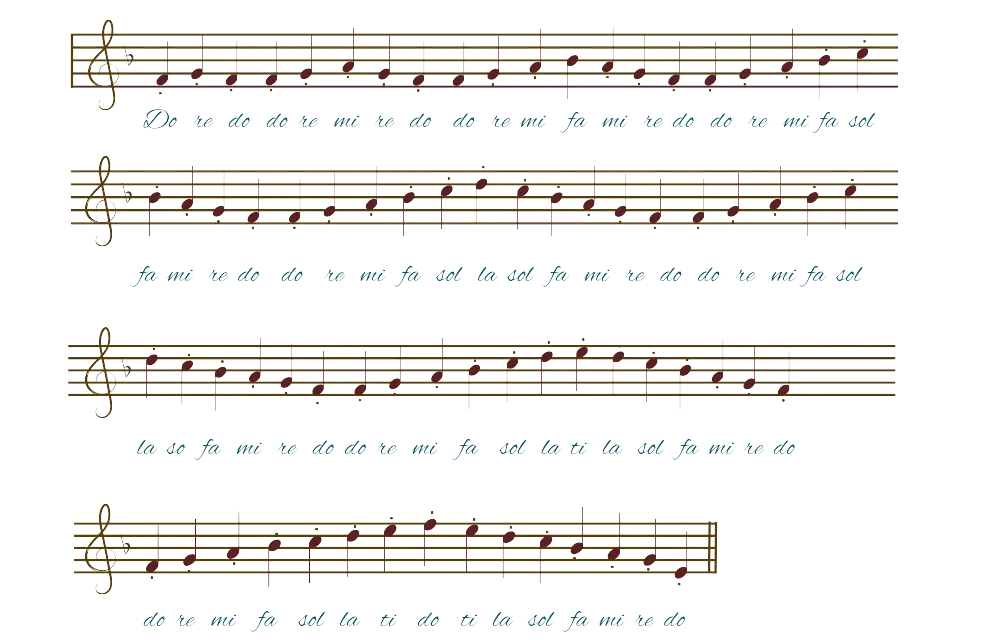Staccato singing technique is one of the three vocal techniques that’s essential for beautiful singing. These include Legato, Staccato and Vibrato. Learning to blend these effects can make your singing sound exceptionally lovely.
We will learn about Staccato in articulation, staccato definition, its musical interpretation and a few tips on how to practice Staccato in music along with exercises in this blog.
Staccato: Definition in Music
Staccato is an Italian word meaning “Detached”. It is an articulation mark that directs singers or instrumentalists to sing or play short, detached notes. In simple words, Legato technique connects notes and Staccato Technique separates notes. Staccato notes are usually used for rhythmic purposes. It also gives a punctuated effect. It helps singers perform expressively and enhances articulation.

Did You Know?
There are references of Staccato in Music Theory from the 1600s.Maria Callas’ biography starring Angelina Jolie on Netflix will be a talk of the town soon.
Staccato on a Musical Staff
Staccato is marked with a dot at the end of a note head of the notes on a musical staff. So it would appear above and below the notes depending on its position on the stave lines. It instructs the singer to detach the notes from each other and sing it quickly. The duration of a staccato note can approximately be half the value of the note. For example, if you see a dot on a crotchet, that note can be articulated in the duration of a quaver for a perfect staccato effect.
Understanding Staccato Technique
To master the Staccato technique you need to look into a few approaches. These vocal techniques are absolutely a necessity to understand and sing staccato notes perfectly.
1. Articulation
Since Staccato’s definition is all about cutting the note values short, then you need to concentrate on lyrics clarity. The clarity of vowels and consonants is very important because consonants clarity males staccato notes sound better.
2. Placement
To get a clear, relaxed sound you need to have relaxed muscles. Try not to push your voice to the back of your throat. Make sure that the resonance in all voice registers are balanced.
3. Breath Support
For a relaxed and clear but crisp sound, you need to concentrate on your breath control with a good core support. Diaphragmatic breathing can help you take quick and deep breaths in a very short period of time.
4. Rhythm and Pitch Accuracy
Make sure you are able to maintain an even breath between the notes while singing staccato technique. You can use a metronome to practice rhythm accuracy. It is also important to concentrate on pitch accuracy. Since staccato notes are short and crisp, pitches can be compromised easily. Practice vocal exercises in staccato style to avoid these problems.
5. Subtle vocal
It’s crucial to begin staccato notes subtly. Avoid any accent or strong vocal throw as singing staccato technique is brief and short.
Exercises for Singing Staccato Techniques
Staccato definition requires a short and controlled sound. To achieve that, you must practice these exercises consistently! These exercises usually include repeating brief, detached notes on different scales or patterns to help you get the hang of it.
1. Solfege

Practice these solfege patterns using staccato technique. This will help you get a hold of rhythm and pitch accuracy.
2. Scales

Scales in ascending and descending orders using staccato articulation can help you sing staccato notes comfortably throughout your vocal range- high and low pitches.
3. Intervals

Practicing intervals using staccato technique is an excellent approach to develop pitch accuracy while singing staccato technique. Start with smaller intervals like seconds and thirds and then work your way up till octaves.
4. Vowels with Consonants

It’s important that the consonants before the vowels are shaped properly for better output of staccato articulation. You can try different consonants- vowel combinations to improve clarity and flexibility of your vowels- consonant placement.
5. Rhythm Exercises
Singing Staccato technique in different note values and patterns can help you improve rhythmic precision. You can also try using vowels on triplets or syncopated rhythms.
6. Dynamics
To improve dynamics control, try practicing different combinations of dynamics. For eg, from piano(soft) to forte(loud) using a crescendo in between. It also helps you to develop expressive singing using staccato articulation.
Conclusion
Overcoming these difficulties do take time. Little bit of consistent practice can do wonders. Reading articles about the techniques does help. Also Appropriate guidance from an experienced professional can help you brave the storm easily! Book a free demo with musicmsater today.
FAQs
What is the difference between legato and staccato?
Legato is connecting notes and singing smoothly while staccato is breaking notes and singing briefly.
How do you play staccato on the piano?
Staccato is played on piano by playing sharply by lifting fingers quickly.
What does staccato mean in music?
Staccato means to play or sing short detached notes.
How to practice legato and staccato techniques?
You can practice staccato by starting to cut notes and trying to sing with the help of supported breathing.
Related blog: Dynamics in music































